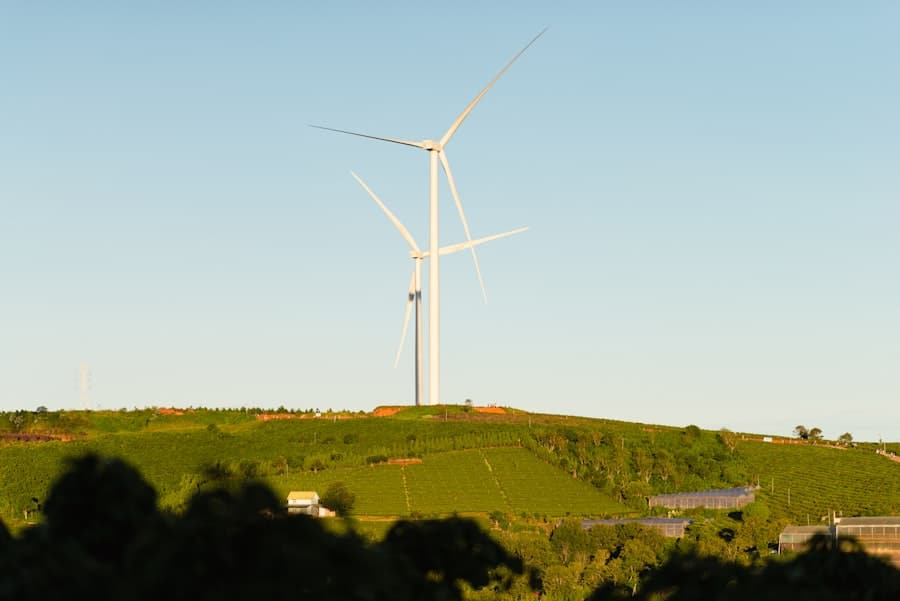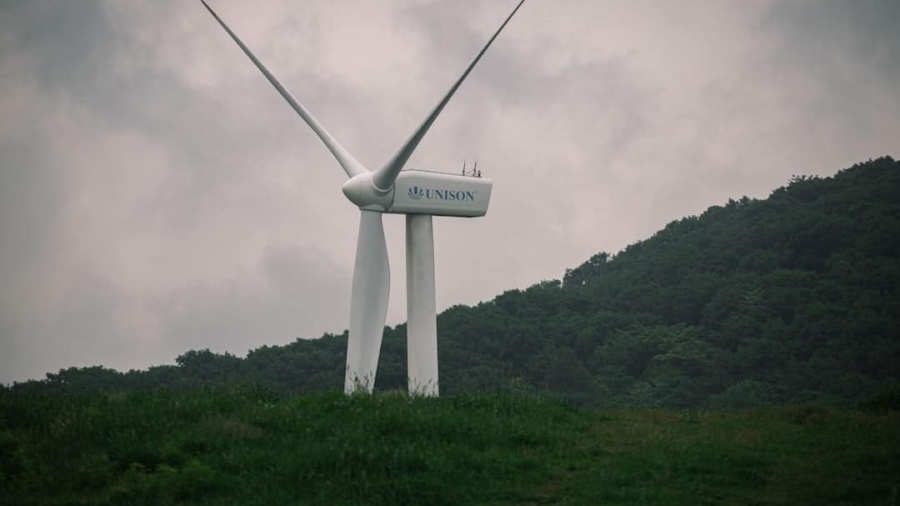Digital twins represent a revolutionary advancement in the realm of technology, particularly in the fields of engineering, manufacturing, and infrastructure management. At its core, a digital twin is a virtual representation of a physical object or system, created using real-time data and advanced modeling techniques. This digital counterpart allows for the simulation, analysis, and optimization of the physical entity throughout its lifecycle.
The concept has gained traction across various industries, driven by the increasing availability of data and the proliferation of Internet of Things (IoT) devices that facilitate real-time monitoring and control. The significance of digital twins extends beyond mere visualization; they serve as powerful tools for decision-making and predictive analytics. By integrating data from sensors, historical records, and machine learning algorithms, digital twins can provide insights that were previously unattainable.
This capability is particularly crucial in the context of infrastructure, where the need for sustainable practices is becoming increasingly urgent. As cities expand and environmental concerns mount, the application of digital twins offers a pathway to enhance efficiency, reduce waste, and promote sustainability in infrastructure development and management.
Key Takeaways
- Digital twins are virtual replicas of physical infrastructure used for monitoring and management.
- They play a crucial role in promoting sustainable infrastructure by optimizing resource use and reducing environmental impact.
- Benefits include improved maintenance, real-time data analysis, and enhanced decision-making for infrastructure management.
- Applications range from energy-efficient building design to smart city planning and infrastructure resilience.
- Challenges include high implementation costs, data security concerns, and the need for specialized expertise.
The Role of Digital Twins in Sustainable Infrastructure
Digital twins play a pivotal role in promoting sustainable infrastructure by enabling more informed decision-making processes. They allow stakeholders to visualize the entire lifecycle of infrastructure projects, from design and construction to operation and maintenance. By simulating various scenarios, planners can assess the environmental impact of different design choices and operational strategies.
For instance, a digital twin of a bridge can help engineers evaluate how different materials or construction methods might affect its longevity and ecological footprint. Moreover, digital twins facilitate real-time monitoring of infrastructure performance, which is essential for maintaining sustainability. By continuously collecting data on structural integrity, energy consumption, and environmental conditions, these virtual models can alert operators to potential issues before they escalate into costly repairs or failures.
This proactive approach not only extends the lifespan of infrastructure but also minimizes resource consumption and waste generation. In essence, digital twins empower cities and organizations to make smarter choices that align with sustainability goals.
Advantages of Using Digital Twins for Infrastructure Management

The advantages of employing digital twins in infrastructure management are manifold. One of the most significant benefits is enhanced operational efficiency. By providing a comprehensive view of an asset’s performance in real-time, digital twins enable managers to optimize maintenance schedules and resource allocation.
For example, predictive maintenance powered by digital twins can identify when equipment is likely to fail, allowing for timely interventions that prevent downtime and extend asset life. Additionally, digital twins foster collaboration among various stakeholders involved in infrastructure projects. Engineers, architects, city planners, and environmentalists can all access the same virtual model, facilitating communication and ensuring that everyone is aligned with project goals.
This collaborative environment not only streamlines workflows but also encourages innovative solutions that prioritize sustainability. Furthermore, the ability to visualize complex data in an intuitive manner helps stakeholders understand the implications of their decisions better, leading to more responsible choices.
Applications of Digital Twins in Sustainable Infrastructure
The applications of digital twins in sustainable infrastructure are diverse and impactful. One prominent example is in urban planning, where digital twins can simulate entire cities to analyze traffic patterns, energy consumption, and environmental impacts. By modeling different urban scenarios, planners can identify optimal layouts that reduce congestion and promote public transportation use while minimizing carbon emissions.
Another significant application is in the management of water resources. Digital twins can be used to create virtual models of water distribution systems, allowing utilities to monitor flow rates, detect leaks, and optimize water usage. This capability is particularly crucial in regions facing water scarcity, as it enables more efficient management of this vital resource.
Additionally, digital twins can support renewable energy initiatives by modeling energy grids that incorporate solar panels or wind turbines, helping to balance supply and demand while reducing reliance on fossil fuels.
Challenges and Limitations of Implementing Digital Twins in Infrastructure
Despite their numerous advantages, the implementation of digital twins in infrastructure is not without challenges. One major hurdle is the integration of disparate data sources. Infrastructure systems often rely on a variety of sensors and technologies that may not be compatible with one another.
Ensuring seamless data flow between these systems is essential for creating accurate and reliable digital twins. This challenge necessitates investment in standardized protocols and interoperability frameworks to facilitate data sharing. Another limitation lies in the complexity of creating accurate models that reflect real-world conditions.
Developing a digital twin requires not only advanced modeling skills but also a deep understanding of the physical system being represented. In many cases, insufficient data or outdated information can lead to inaccuracies in the digital twin, undermining its effectiveness as a decision-making tool. Furthermore, organizations may face resistance to adopting new technologies due to concerns about costs or the need for specialized training.
Case Studies of Successful Implementation of Digital Twins in Sustainable Infrastructure

Several case studies illustrate the successful implementation of digital twins in sustainable infrastructure projects around the world. One notable example is the city of Singapore, which has developed a comprehensive digital twin known as Virtual Singapore. This initiative integrates data from various sources to create a 3D model of the city that supports urban planning and development efforts.
By simulating different scenarios related to traffic flow, energy consumption, and environmental impact, city planners can make informed decisions that enhance sustainability while improving residents’ quality of life. Another compelling case is found in the transportation sector with the use of digital twins for railway systems. In the United Kingdom, Network Rail has implemented digital twin technology to monitor track conditions and predict maintenance needs.
By analyzing real-time data from sensors embedded in tracks and trains, they can optimize maintenance schedules and reduce disruptions caused by track failures. This proactive approach not only enhances safety but also minimizes resource consumption associated with unnecessary repairs.
Future Outlook for Digital Twins in Sustainable Infrastructure
The future outlook for digital twins in sustainable infrastructure appears promising as advancements in technology continue to evolve. The integration of artificial intelligence (AI) and machine learning into digital twin frameworks will enhance their predictive capabilities significantly. As these technologies mature, digital twins will become even more adept at simulating complex scenarios and providing actionable insights for infrastructure management.
Moreover, as cities increasingly adopt smart technologies and IoT devices, the volume of data available for creating digital twins will expand exponentially. This influx of data will enable more granular modeling and analysis, allowing for even greater precision in decision-making processes. Additionally, as sustainability becomes a central focus for governments and organizations worldwide, the demand for innovative solutions like digital twins will likely grow, driving further investment in this technology.
The Importance of Digital Twins in Building and Maintaining Sustainable Infrastructure
Digital twins are poised to play a transformative role in building and maintaining sustainable infrastructure as they offer unprecedented opportunities for efficiency and innovation. By providing real-time insights into asset performance and enabling collaborative decision-making among stakeholders, they empower organizations to make informed choices that align with sustainability goals. While challenges remain in terms of data integration and model accuracy, successful case studies demonstrate the potential benefits that can be realized through effective implementation.
As we look toward the future, it is clear that digital twins will be integral to addressing the pressing challenges associated with urbanization and environmental sustainability. Their ability to simulate complex systems and predict outcomes will be invaluable as cities strive to become more resilient and resource-efficient. Ultimately, embracing digital twin technology will not only enhance infrastructure management but also contribute significantly to building a more sustainable future for generations to come.
Digital twins are revolutionizing the way we approach sustainable infrastructure by providing real-time data and insights that help optimize resource use and reduce waste. For a deeper understanding of how technology can enhance various aspects of our lives, you might find the article on Trusted Reviews particularly interesting, as it offers expert reviews on the latest technological advancements that can support sustainable practices across different sectors.
FAQs
What is a digital twin?
A digital twin is a virtual replica of a physical asset, system, or process that is used to simulate, analyze, and optimize its real-world counterpart in real time.
How do digital twins contribute to sustainable infrastructure?
Digital twins enable better monitoring, management, and optimization of infrastructure by providing real-time data and predictive insights, which help reduce resource consumption, minimize waste, and improve energy efficiency.
What types of infrastructure can benefit from digital twins?
Digital twins can be applied to various types of infrastructure, including buildings, transportation systems, water and energy networks, and urban planning projects.
How do digital twins improve energy efficiency in infrastructure?
By continuously monitoring energy usage and simulating different scenarios, digital twins help identify inefficiencies and optimize energy consumption, leading to reduced carbon emissions and operational costs.
Can digital twins help in disaster management and resilience?
Yes, digital twins can simulate the impact of natural disasters or system failures, allowing planners to develop more resilient infrastructure designs and effective emergency response strategies.
What role does data play in the effectiveness of digital twins?
Accurate and real-time data from sensors and IoT devices are essential for digital twins to provide reliable simulations and insights, enabling informed decision-making for sustainable infrastructure management.
Are digital twins cost-effective for infrastructure projects?
While initial setup costs can be significant, digital twins often lead to long-term savings by optimizing maintenance, reducing downtime, and extending the lifespan of infrastructure assets.
How do digital twins support environmental sustainability goals?
Digital twins help track environmental impacts, optimize resource use, and support compliance with sustainability standards, contributing to reduced greenhouse gas emissions and conservation of natural resources.
Is the use of digital twins limited to new infrastructure projects?
No, digital twins can be applied to both new and existing infrastructure to improve performance, maintenance, and sustainability throughout the asset’s lifecycle.
What technologies are commonly integrated with digital twins?
Digital twins often integrate technologies such as IoT sensors, artificial intelligence, machine learning, cloud computing, and geographic information systems (GIS) to enhance data collection and analysis.

